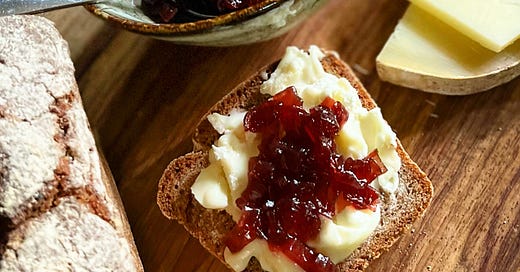The last 5% is always the most difficult to do.
That thought crossed my mind this week as I read an excellent profile piece on Giorgio Armani. At 88, Armani is still fully engaged in his sprawling empire, a fashion samurai with a reputation for perfectionism, obsessive attention to detail and above all, a drive to innovate.
He is fully aware that the hourglass is inexorably running down. But as he says “I need to forget that I'm 88, otherwise it's over. I need to try as if I started today…That's what wakes me up every morning. I still need to prove myself." At the same time he has become detached with age and its wisdom. “To know what's the right thing, not following the road that I don't like. You know, it is very simple. Say no."
I don’t know about you, but I find saying no hard to do. As we get older, we want to say yes to more, to not miss an opportunity, to make the most of all the grains of sand left. As I reflected on Armani’s comment, I realized there’s a fine distinction between saying yes indiscriminately and being deliberate. What’s key is finding the right balance and even more, being clear on what’s really important to us.
The disciplined pursuit of less
Geoff Mckeown has been writing about this for years. Call it the clarity paradox. In this excellent piece in the Harvard Business Review, he explores the paradox of the potential failure that comes from success. As he describes it, success - something we all strive for in some measure - can actually be a catalyst for failure. When we’re successful we have more opportunities. That sounds good, until the pursuit of those opportunities diffuses our original purpose - what led us to succeed - in the first place.
He goes on to say: “If success is a catalyst for failure because it leads to the “undisciplined pursuit of more,” then one simple antidote is the disciplined pursuit of less. Not just haphazardly saying no, but purposefully, deliberately, and strategically eliminating the nonessentials. Constantly reducing, focusing and simplifying…and being willing to cut out really terrific opportunities as well.”
What can make this tricky is that sometimes those opportunities call to us like siren songs: alluring, seductive, with promises of more and better. They can so easily drown out the tiny and steady voice inside us, the one that really knows what we should be focused on.
"The more sand has escaped from the hourglass of our life, the clearer we should see through it."
– Niccolo Machiavelli
We shouldn’t walk away from the beautiful bright slabs of possibilities on our horizons. They give us energy and hope and inspiration. But we can also complete a project by dropping it. Perhaps clarity comes when we first think about all the myriad things we still want to do - and then eliminate the ones we truly never will.
Tropea onion jam
makes about 2 cups
I love making jams and preserves. The problem is I’m the only one who eats them. After years of putting up jars of jam, only to give them away, or even worse, throw them out after an over-extended shelf life, I’ve become pretty selective about what I spend my time making.
Switching my focus to the savoury side of preserving has turned out to be just the right thing to focus my efforts. And the book that truly fires my imagination is Preserving Italy, by the wonderful Domenica Marchetti. This book goes far beyond jam. With recipes for pickled zucchini, spiced pickled mushrooms, fig and walnut “salami”, pear mostarda and more, it’s a love letter to the Italian tradition of conserving foods at their peak to enjoy year round.
I’ve long wanted to make the Tropea onion jam featured in this book. Known as la regina rossa – the red queen – by Italians, Tropea onions are natives of Calabria, prized for their sweet, aromatic flavour. When I saw Tropea onions at the farmers’ market, I knew what I’d be doing this weekend.
PS. Domenica writes on Substack too! Her weekly newsletter, Buona Domenica, is full of wonderful recipes and stories, and comes out every Sunday. You can find it here to subscribe.
Note: I have not included instructions here for preserving the jam using a water bath. If you’d like to preserve the jam and make it shelf stable, this step by step guide from Bernadin is a great go-to for first timers!
Ingredients
454 grams Tropea onions, cut into small dice (if you can’t find Tropea onions, substitute young firm red onions instead)
200 grams sugar
1 cup full-bodied red wine
1 teaspoon kosher salt
10 whole peppercorns
1 whole clove
1 bay leaf
A 1-inch piece of vanilla bean
Half a cinnamon stick
2 tablespoons red wine vinegar
Combine the onions, sugar, wine and salt in a medium heavy bottomed saucepan.
Create a sachet using cheesecloth to hold the peppercorns, clove, bay leaf, vanilla bean and cinnamon stick, and tie securely with kitchen string.
Add the sachet to the pot and bring to a lively simmer over medium high heat until the mixture reaches 225 degrees F., or until the mixture thickens. This will take anywhere from 20 to 40 minutes. Watch the jam syrup carefully and make sure it doesn’t boil down too far and get sticky.
Once the jam is ready, stir in the vinegar.
Ladle the jam into 1-cup or ½-cup Mason jars and cool before storing in the refrigerator. The jam will keep for several weeks. Serve with cheese or roast meats.






Thank you for the kind shoutout and for sharing the onion jam recipe. I will have to watch the Armani documentary. I love that he is still motivated every day--or at least chooses to be so. Inspiring 💫